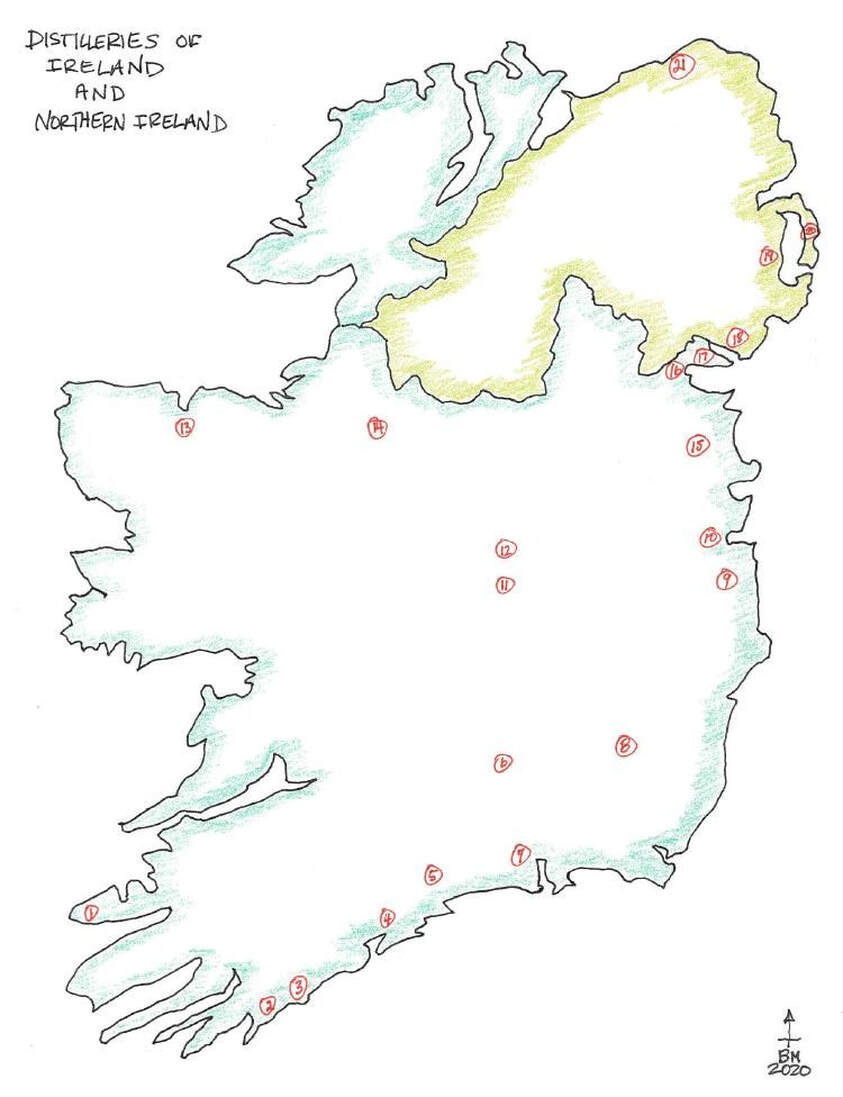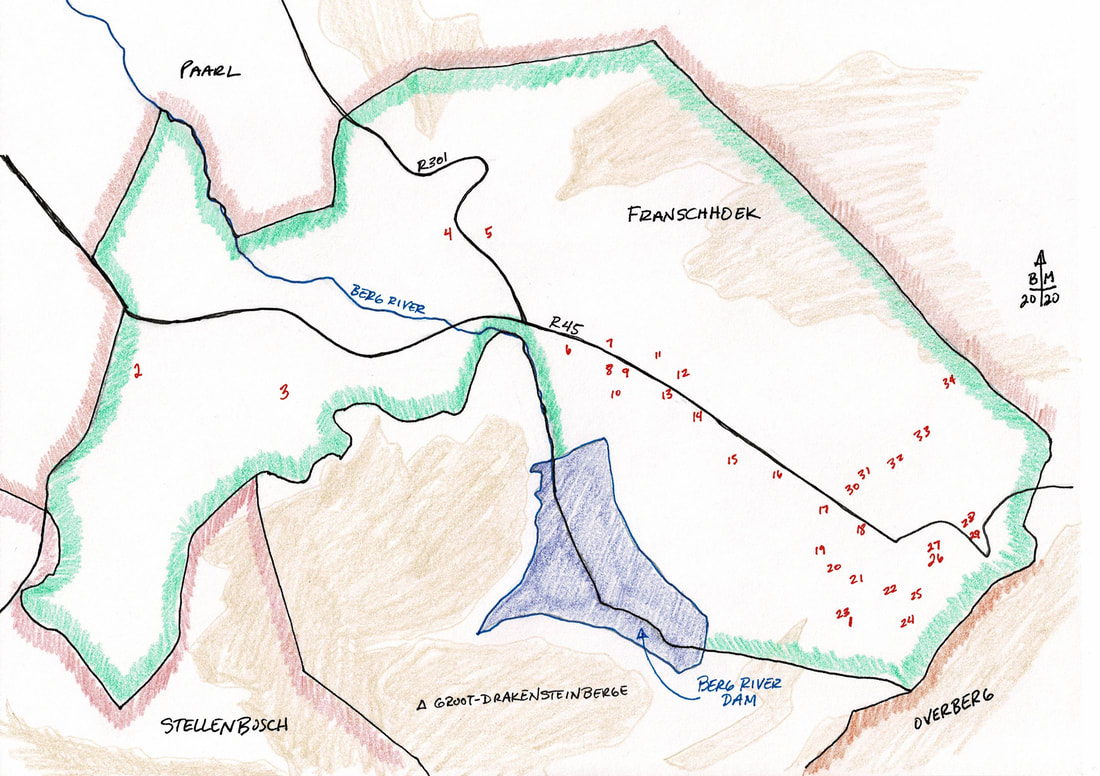|
While working on some wine study this week (which has not been exactly easy with all of the distractions and works schedule getting tossed about due to the global pandemic), I landed on South Africa, and specifically Franschhoek. I got here due to the fact that I posted a Survey on Facebook and asked folks to vote on which wine I should open and discuss from my cellar. I gave several choices - all from the 2001 vintage.
Why 2001? Well, I had 19 stuck in my head for some reason, and so I went back 19 years to see what I had about. It turns out there are quite a few items in my cellar from that vintage - I was working as a sales rep at the time, and I had the opportunity to accumulate quite a bit of wine from suppliers, personal purchases and the odd sample that never got used. Of the selections offered up for opening were a Barolo from La Spinetta, a Napa Cabernet Sauvignon from Ladera Winery, and the Cabernet Sauvignon from Boekenhoutskloof Winery from the Franschhoek region of the Western Cape in South Africa (ZA). The winner, with 2/3 of the votes, was the Boekenhoutskloof, and was it ever good.
The key points on this wine are: it is from the 2001 vintage, a vintage that was hot and very low yielding - in fact the lowest yields since the 1988 vintage for the most part. Additionally, Boekenhoutskloof had only been making wine for about 5 years, and they made one of the highest regarded wines of the vintage. This wine scored very well in the press and there were many comments from reviewers that indicated long aging was ahead for this wine. As I held this for 19 years or so I would agree upon opening it that there was indeed a lot to be hopeful in this wine. Those predicting agability were definitely correct in their predictions. 100% Cabernet Sauvignon, aged for 27 months in French Oak barrels.
Guide to wineries in the the Franschhoek:
The basics on Franschhoek
0 Comments
What exactly is Irish Whiskey and how is it different from other whiskies? Irish whiskey (with the E), is a whiskey from Ireland, and the Irish are generally credited with inventing modern whiskey…
 Key to the Distillery Map of Ireland:
Defining Irish Whiskey, today:
There are four categories of labeling terms related to the production of Irish Whiskey. These terms have been more clearly defined over the years, and are in line with the EU regulations of protected status you might find with other whiskey, wine and similar products. Some of the basic production requirements include:
Traditionally the most distinguishing characteristic of Irish Whiskey would be - Balance. Often the aspect defining the style of Irish whiskey is the fact that it is triple distilled. This is not a legal requirement, but it is a technique used to create a smooth and elegant whiskey – different from Scotch and American whiskey styles. When tasting Irish Whiskey, refer back to the label and check the category. Blended whiskies will have a lighter, more delicate feel on the palate (contributing to their popularity), while Single Pot Stilled and Single Malt styles will be more unique and reflect the region and distillery characteristics, essentially making a richer and deeper flavored whiskey.
Unlike Scotch Whisky, Irish Whiskey typically does not involve the use of Peat, and as such it is rare to come across a Peated style – although they do exist. Look for Coonemara Peated Pot Still as the most widely available of this style. What about wood and finishing? Oak barrels from the Sherry and Port Regions were common vessels for storage, aging and transport throughout much of the history of Irish Whiskey and whiskey in general. Today, most Irish whiskey will be aged initially in used Bourbon barrels, with some being aged and/or finished in ex-Sherry, Marsala and Madeira casks. Each of these styles will impart a unique aspect to the spirit. Look for the Spots whiskeys by Mitchell & Sons, and taste side by side, as these are done in a variety of barrels. What about Aged Whiskey Statements? Similar to other regional age statements on whiskey, Irish Whiskey with an age statement means that no part of the blend or bottling may be younger than the age expressed on the label. Some of the better examples to look for will be: Bushmills 16y, Kilbeggan 15y, Jameson 18y, Powers 12y. Some of these whiskies are becoming short in supply as older stocks run low, but time will allow for them to catch up. If you would ike to download this information as a consolidated staff training sheet. Click Here. For an Irish Whiskey tasting sheet prepared by New England Wine Academy. Click Here. |
ABOUT THE Author
Brian Mitchell runs The New England Wine Academy, and is responsible for the content of this blog. With 30 years of drinks industry experience, Brian has learned a few things, but everyday he is learning more. This blog helps to bring that knowledge to you. Archives
July 2024
Categories
All
|
Copyright 2018 > 2024 by New England Wine Academy, LLC
we advocate making responsible decisions
we advocate making responsible decisions


 RSS Feed
RSS Feed
